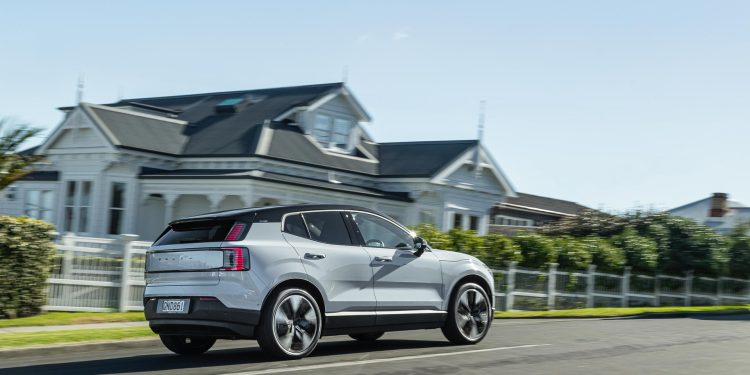2024 Volvo EX30 Twin-Motor Performance review
Words: Peter Louisson | Photos: Isaac Western
Volvo has launched its smallest EV to date, the EX30 compact SUV. We check out the range topper of the trio, the Twin-Motor Performance model with AWD.
Trust the Swedes to do it differently. That’s why people liked Saabs so much. Hmm, bad example perhaps, given how that all ended.
But buying Swedish you can pretty much guarantee that design will be slightly different from that of the competition.
So it is with Volvo’s third fully electric model following the XC40, Volvo C40 Recharge, with the fourth, the EX90, due soon.
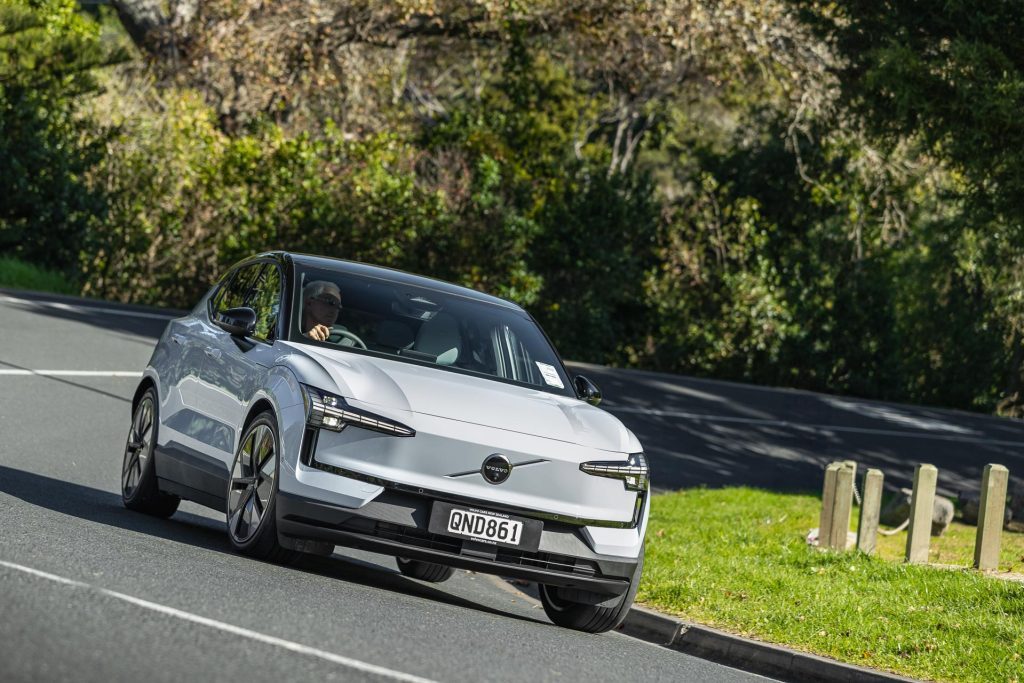
The EX30 is a compact SUV that features the easily identifiable Thor’s hammer LED lighting signature up front, with a closed off grille, aero-optimised alloys, appealing wheel arch lines and, typically for a modern EV, the wheels set right out to the corners. It’s a striking wee beastie.
Move closer and things get more interesting. Approach with key fob in hand, and it unlocks automatically. The key fob resembles a scale model of the monolith from 2001: A Space Odyssey.
It’s a little rectangular prism with no buttons. Retreat and the car relocks, or you can thumb the handle if you want to lock it manually.
But you don’t need to; you can hear it click as you wander off. You can integrate its functionality into your smartphone.
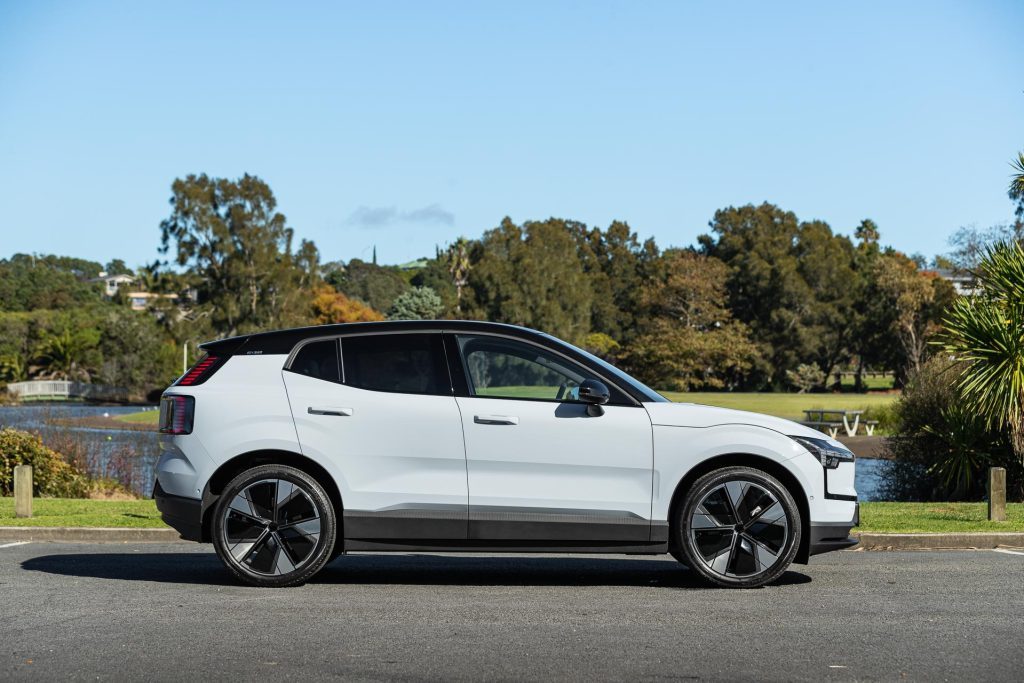
Embrace the different
Step inside and this vehicle takes minimalism to the extreme. There are no driver instruments behind the wheel, just a little anti-distraction device that monitors your eye movements, darn it.
And the only buttons in the vehicle are on the wheel and between the seats where two controls operate the front window lifts. Everything else is done within the 12.3-inch portrait-style touchscreen that runs on Android software.
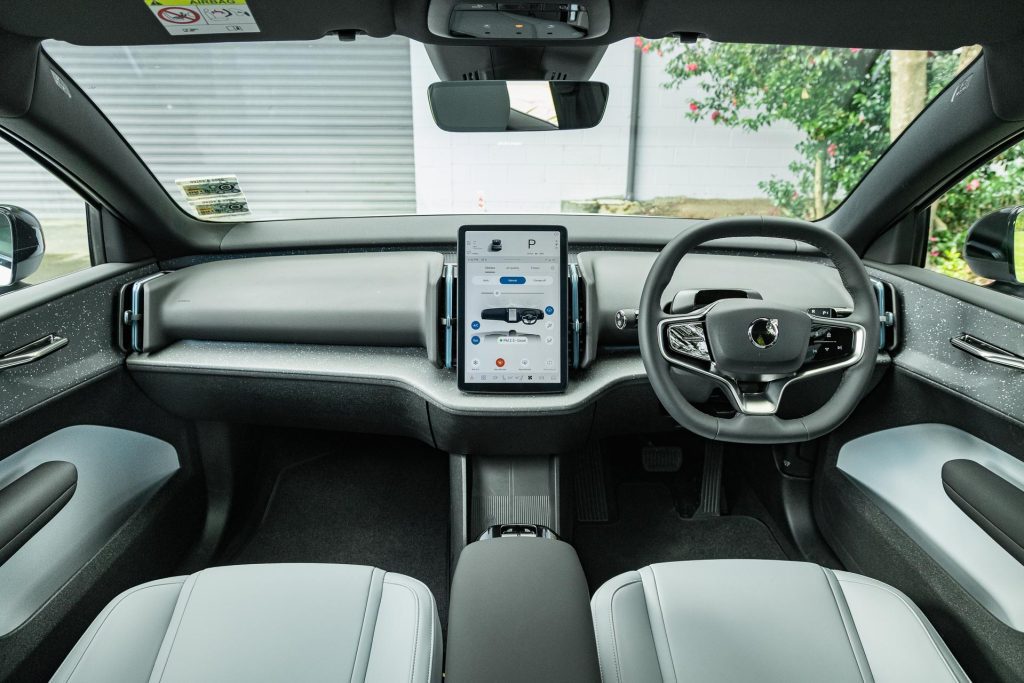
That’s also where the speedo resides. Instead of having an expensive head-up display the speed is shown in the top right quadrant of the screen.
Alongside it, occasionally, is traffic sign recognition, presumably showing up when the speed limit changes. So they’ve stolen a leaf from the Tesla songbook. Even the black and white graphics are similar.
Elsewhere inside there are sizeable lined bins, while the seats look like they’re leather but that’s an illusion. There are neoprene-like soft touch surfaces, but quite a lot of hard plastics too.
However, they’re nice quality, most evidently made from recycled plastics and the like.
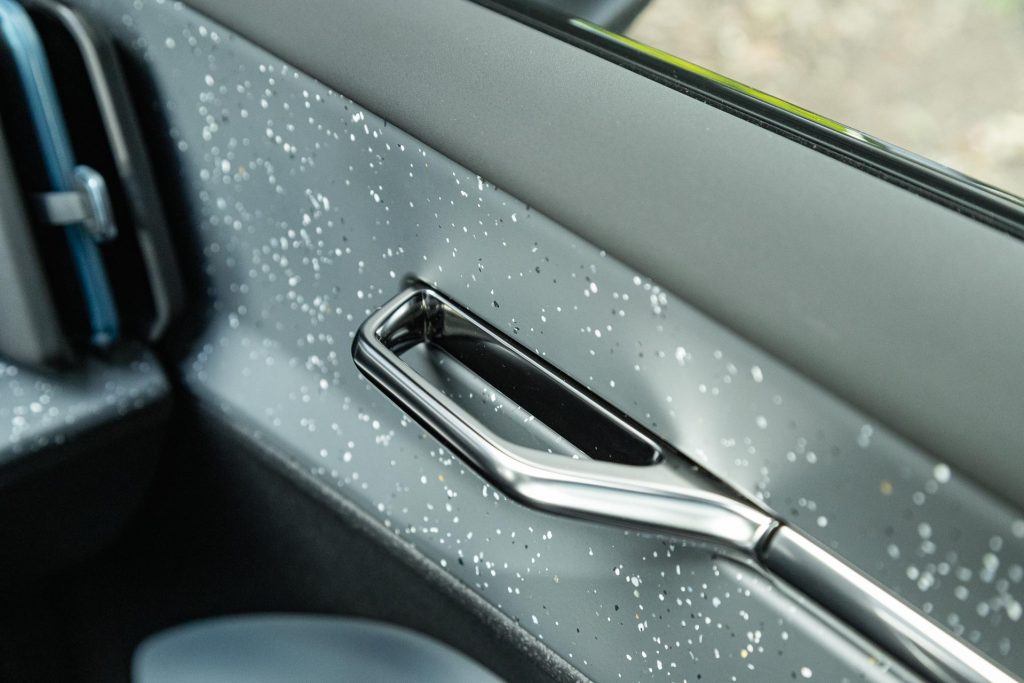
Bits of the dash remind of a Jackson Pollock painting, blotches of paint seemingly launched at a blank canvas. I’m not sure whether that works well or not, but if I’m not sure then probably not.
Other things? The glove compartment flops down from under the centre of the dash. That’s after you’ve found the icon for glovebox on the infotainment screen and pushed that.
Most of the frequently used functions are only a submenu away, like mirror adjustment, lane keeping cancellation and the like.
But don’t dawdle for too long or you get the warning from the distraction monitor. It’s not a severe ticking off, just a couple of soft bleeps. Clearly Volvo expects you to do all your set-up malarkey before setting off. And like anyone does that.
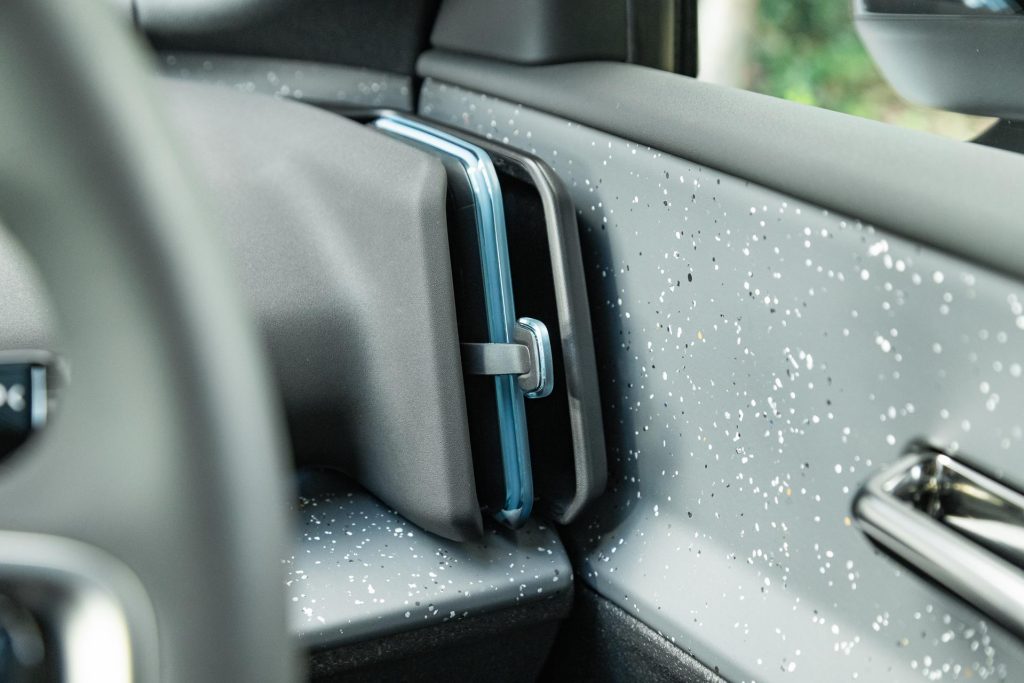
Roam theatre?
Other idiosyncrasies? There are no speakers in the door cards. Instead the front ones are set inside a Harmon Kardon sound bar that’s up beneath the windscreen.
When you optimise the image for the driver, the sound is a bit tinny. But it is much better when set for all occupants and optimising the EQ (while stationary of course) improves things a lot.
Good luck finding the stations you might want to listen to. They don’t seem to pop up automatically in a station list. However, if you ask the hired help nicely, she will tune in whatever you want.
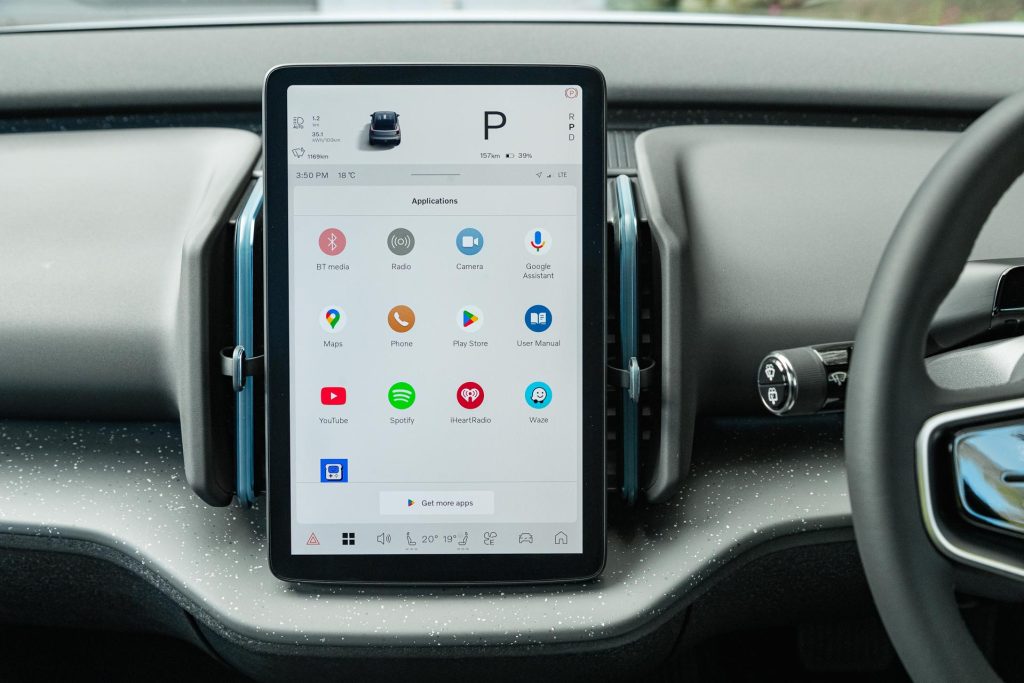
Then it’s just a matter of pushing the ‘favourite’ star. Simple enough then. Except sometimes when we went to listen to the radio, it wouldn’t kick in.
Odd but I guess that’s what happens when you relegate everything to a central server.
Like many modern EVs, there’s no stop/start button so you just hop in and it’s automatically ready to roll. Select D and you’re away. Another button dispensed with, or more accurately the cost of them.
The drive itself is very satisfying, so long as you can force yourself to stop fiddling with the damn touchscreen. But you can’t, even to check trip info.
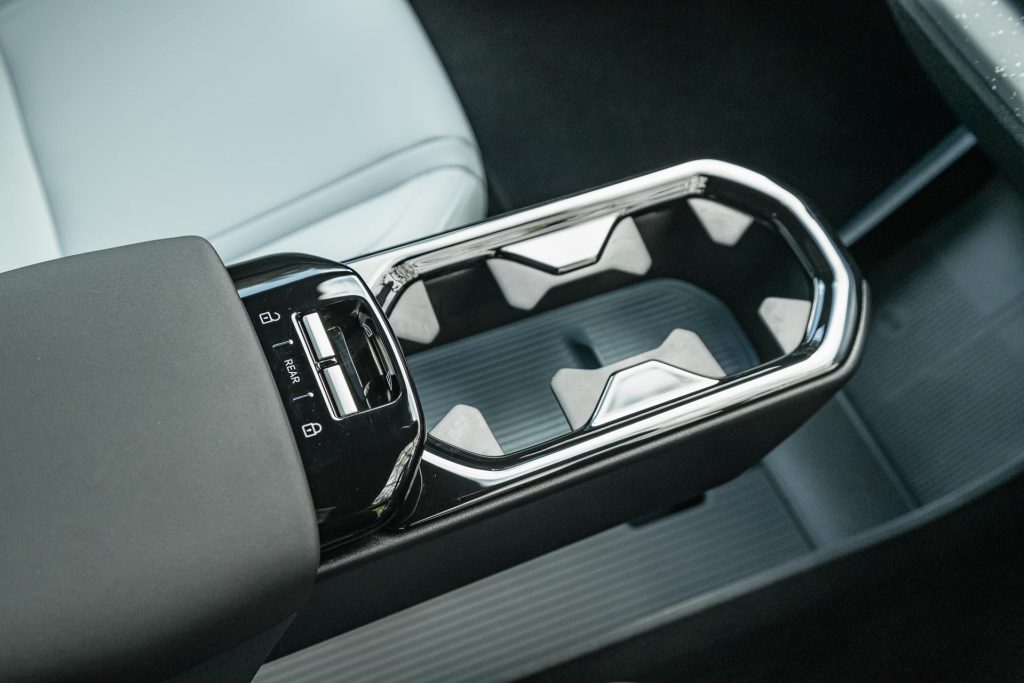
That’s a few submenus down and it shows instantaneous and mean energy use, which we found was around 22kWh/100km.
As to charging, we set it to juice between 10pm and 6am, and the supplied three-pin cable added 10 per cent overnight. Which is enough for running around the next day, no sweat.
This can be fast charged at a rate of 153kW, which supposedly rezips the battery up from 10 to 80 per cent in around 25 minutes.
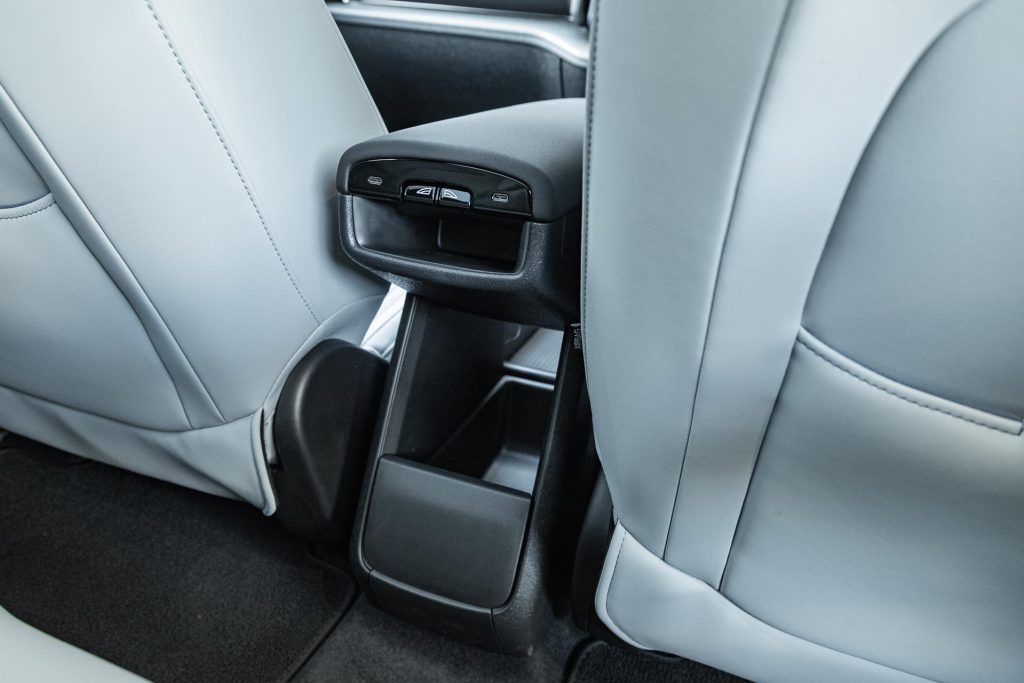
And as for regen? No paddles, sorry. Just a touchscreen setting for one-pedal driving. I’d rather a range of regen options ourselves, but not if there aren’t paddles.
I seldom used the one-pedal option, just on major descents.
Three to choose from
Before discussing how it goes on road, we should just briefly mention that locally there are three powertrain options and two different battery packs. Pricing ranges from $74,990 to $84,990.
The base Plus model features a 200kW and 343Nm single motor paired with a 51kWh LFP battery for 344km of range. It’s pretty feisty, taking a stated 5.5sec to hit 100km/h.
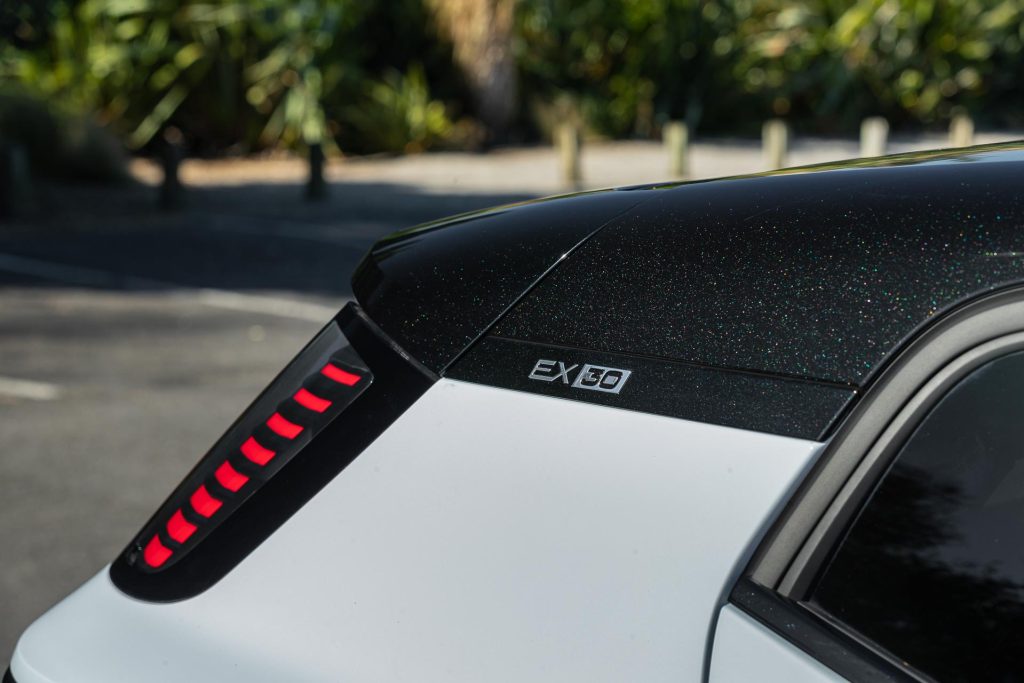
The intermediate Ultra model – both are rear-wheel drive – uses the same powertrain but gets a 69kWh NMC battery and 480km of range.
At the head of the pack is the one you see here, the Twin-Motor Performance AWD variant with 315kW and 525Nm of torque. Pick it by the fancier alloys.
It is the quickest car that Volvo has ever sold, with a claimed 0-100 time of 3.6 seconds. Range from its 69kWh NMC battery comes in at 445km. But typically, our tester kicked off with 390km when fully charged.
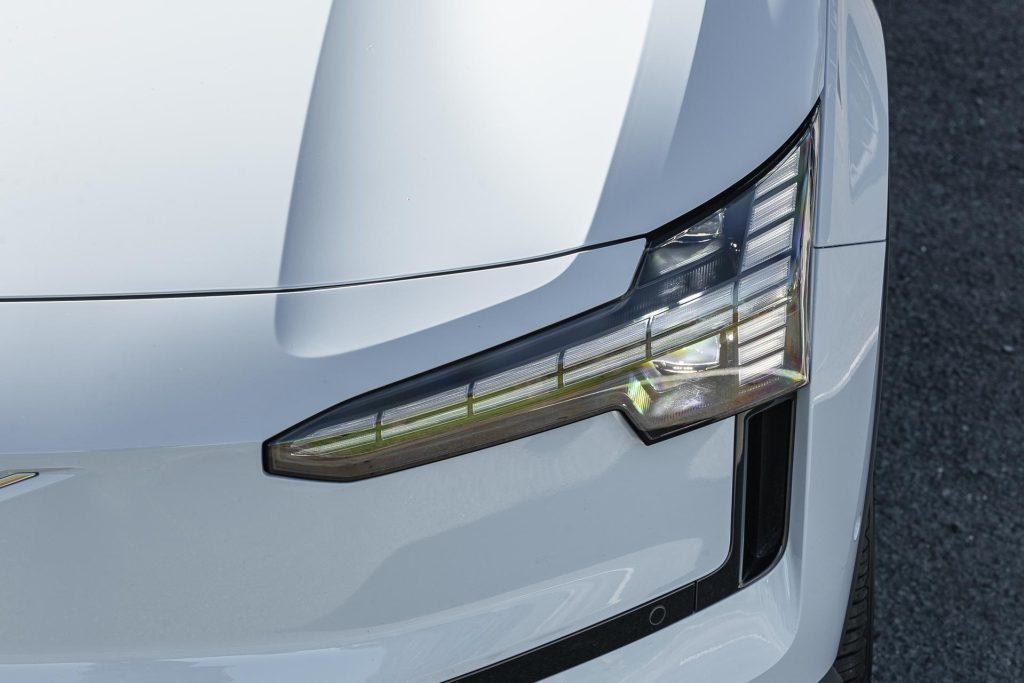
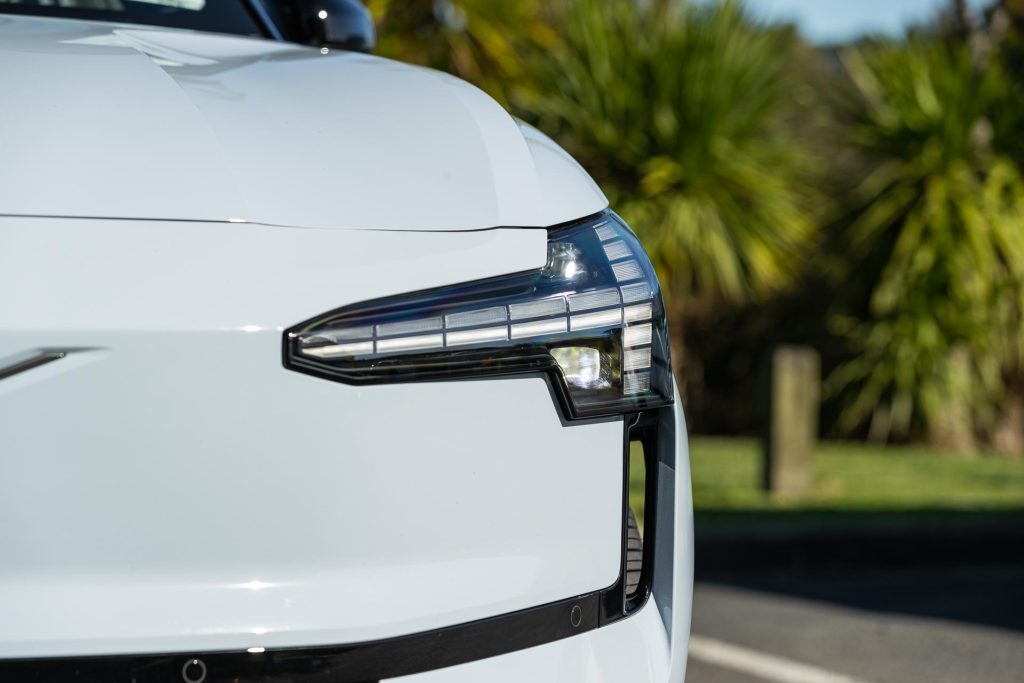
Whoever drove it before didn’t spare the horses or drove it on the open road mainly, or both. With mainly urban running you’d soon see up around the 460 mark after a full battery recharge.
All variants are covered by a three-year, unlimited km warranty (eight years for the battery pack) and three years of free servicing.
Fast fun
As to the drive character itself, it’s typically EV in most ways. Quiet as a churchmouse on hotmix, almost unassuming.
Around town you wouldn’t credit this can go like the clappers when the opportunity presents itself. On the flat and out in the wilds, it will, as promised, hit 100 from a standing start in 3.6seconds. And slowpokes are dispatched in just 2.5sec.
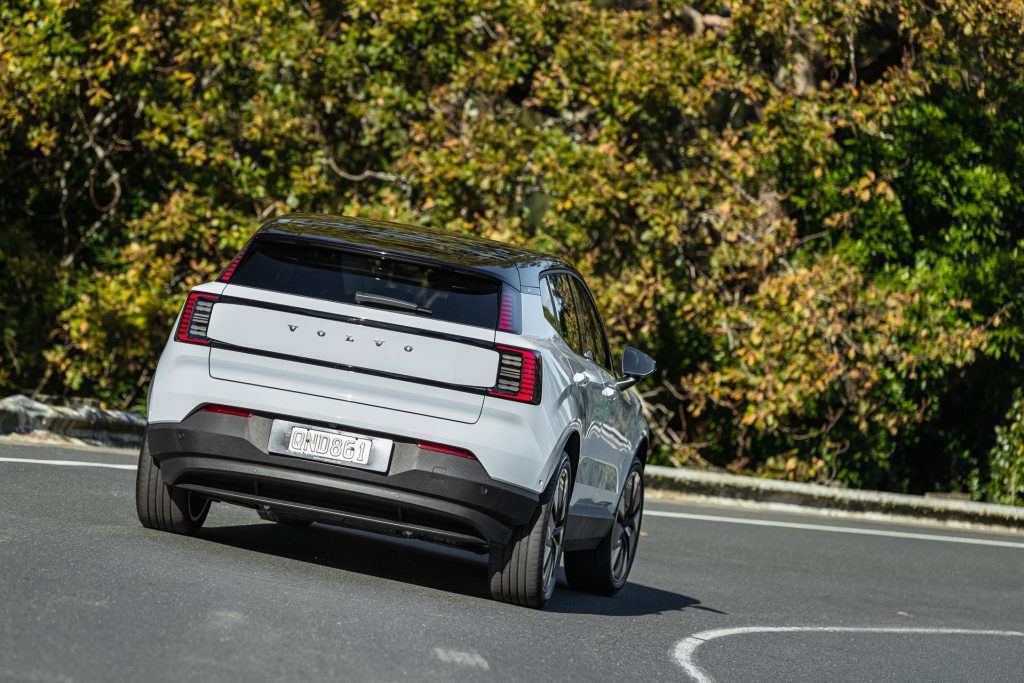
We like compact electrics because they’re not overly hefty, in this case 1960kg. Moreover, they just feel more nimble. This certainly does and is hardly threatening, despite its turn of speed.
Naturally it can hustle. The suspension is fixed but rather well sorted, with firmish damping to control body movements but not so much that it messes with ride quality.
And the grip is assured with AWD. Chuck it at a corner and it rounds up beautifully, especially if you select the Performance setting which locks it in AWD mode, with a 40/60 split front/rear.
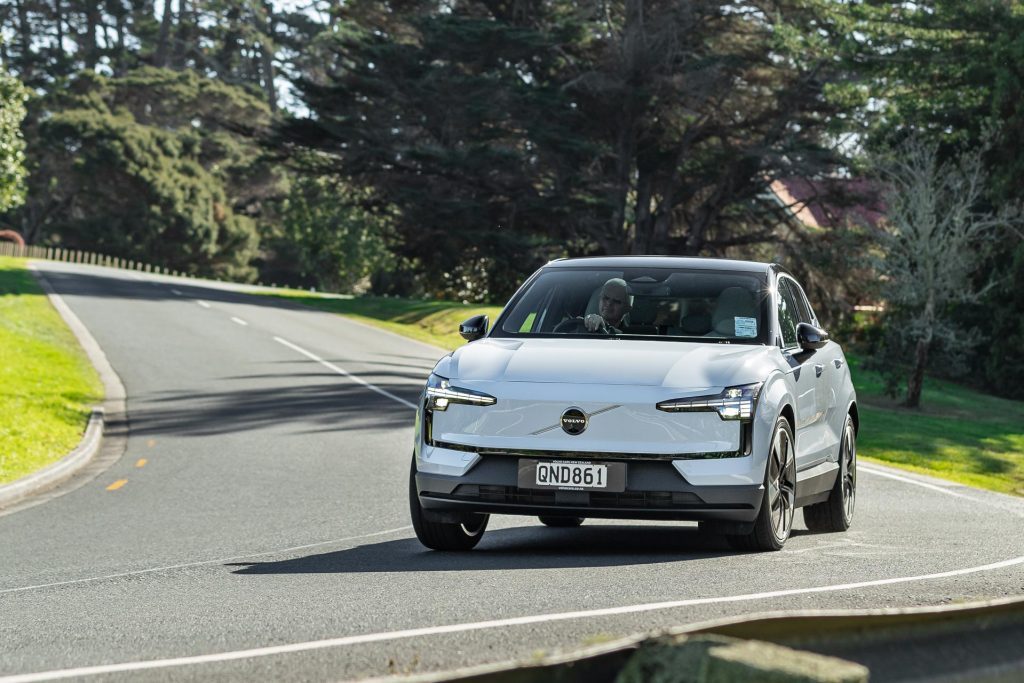
With the weight low and evenly split this hares around corners without crying quits. It’s really fun on the right roads. Only watch your range if you’re turning up the wick.
Tiny house?
Where compact SUVs aren’t so great is on ferrying luggage or bods. Singles or couple-type buyers understand that, which is what attracts them to its compact dimensions (4233mm long) in the first place.
As Ben Montgomery, GM of Volvo Cars New Zealand, puts it; “the Volvo EX30 is an espresso version of everything Volvo.”
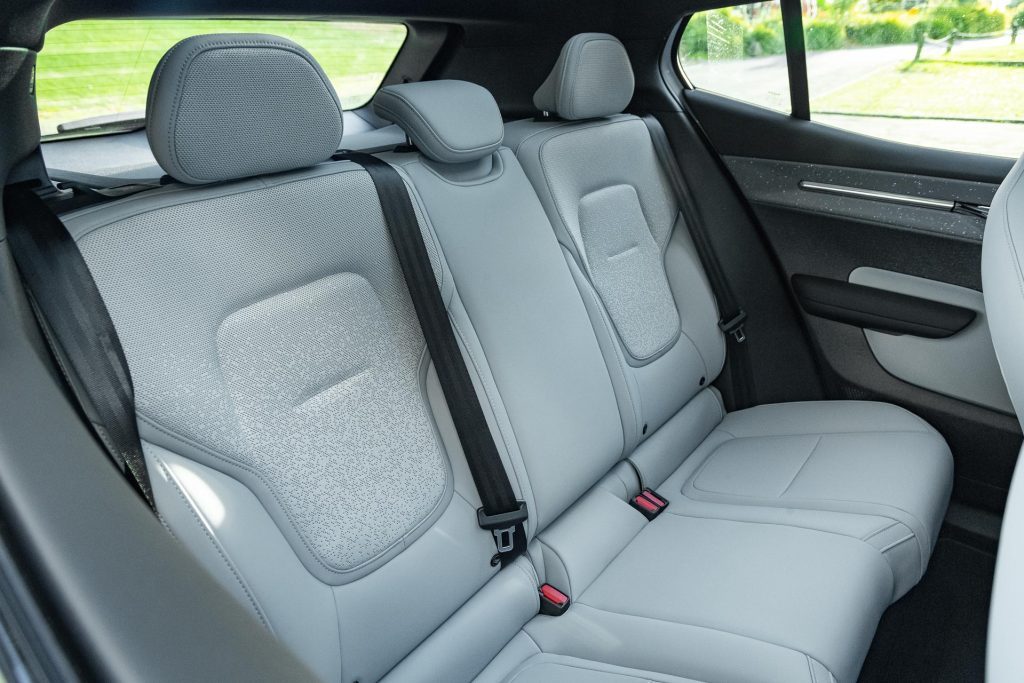
With an average driver at the helm the knee room in the rear is somewhat limited, although head clearance is not too bad considering it comes with a fixed panoramic sunroof.
Out the back, there’s a powered fifth door and the boot floor is set at a sensible height for both loading and ensuring a flat surface after rolling over the rear seat backs.
There’s also a 61L underfloor compartment for charge cables. The frunk is tiny; not sure why they even bothered.
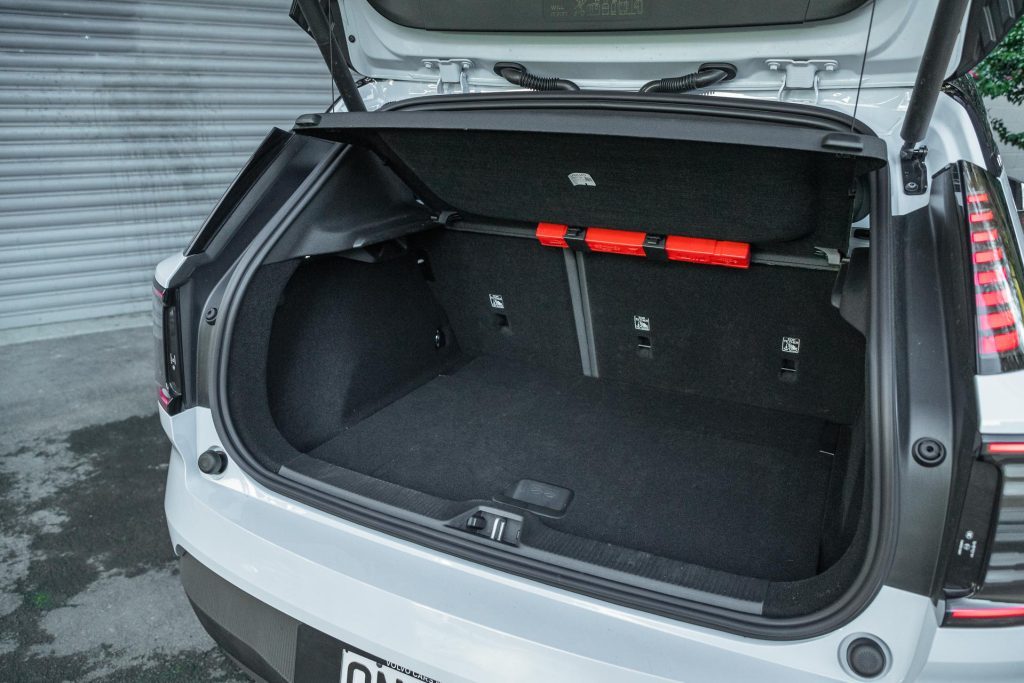
The driving position is slightly elevated so you get a nice view out over its abbreviated front. Towards the rear however, not quite so much; the screen is small and the headrests impose themselves.
But with surround cameras that’s no issue. There’s plenty of light inside too with the full sized glass roof above, but without a blind.
Standard items not already mentioned include a two-tone roof, a pair of wireless phone chargers and dual pullout cupholders, Park Pilot Assist (self parking), powered seats with four-way lumbar support, tinted rear windows, heated front seats, and a wheel warmer.
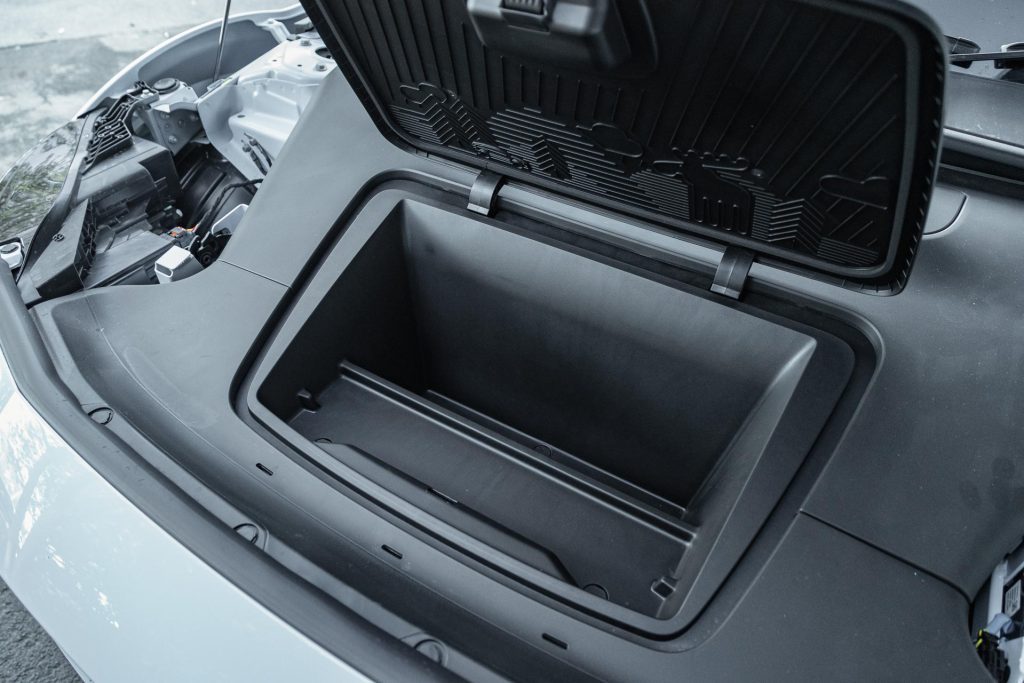
Swede As
This has already gained accolades since its European launch, winning Car of the Year status with CarWow and Electrifying.com. It’s also the World Urban Car 2024.
We can (almost) see why. We like the look and how this drives, along with its sheer stomp. However, the human-machine interface is a bit meh. Unfortunately, it’s increasingly the new normal.
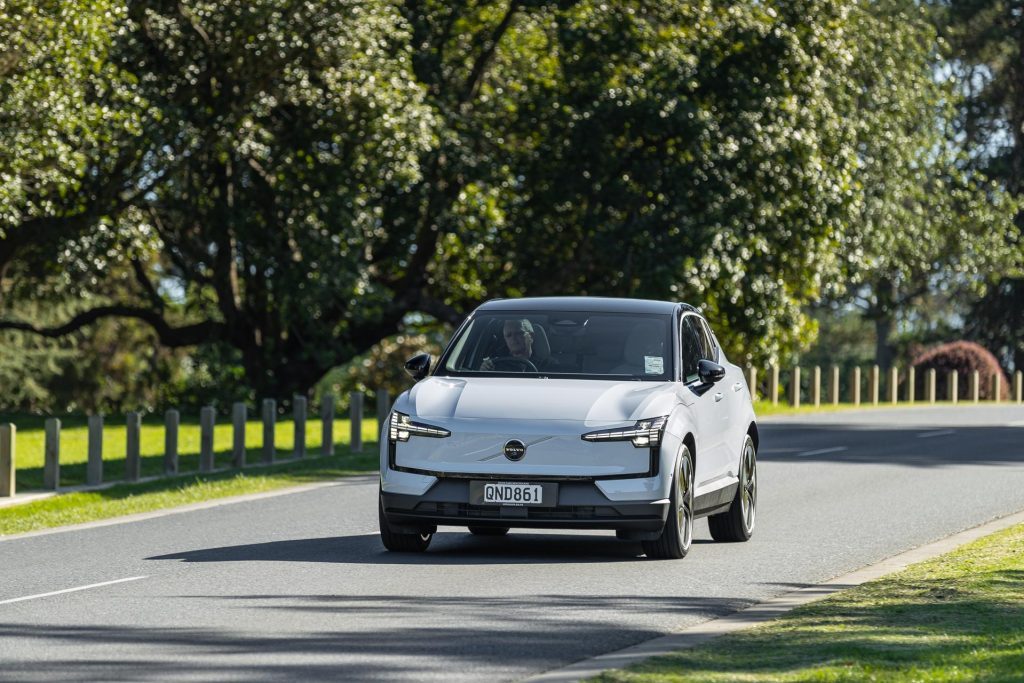
Just make sure this has enough room for you. We’d imagine the base model with its greater range will be sufficient for many folks.
On the horizon is a Cross Country variant with added ground clearance, and the option of 19-inch wheels or 18-inch units with rugged tyres.
| Model | Volvo EX30 Twin-Motor Performance |
| Price | $84,990 |
| Motor | 315kW, 543Nm |
| Battery | 64.0kWh net |
| Range | 445km |
| Drivetrain | single-speed auto, AWD |
| Energy Use | 18.0kWh/100km |
| C02 Output | 0g/km |
| 0-100km/h | 3.59sec |
| 80-120km/h | 2.50sec (71.18m) |
| 100-0km/h | 32.52m |
| Stability systems | ABS, ESP |
| Safety | AEB, ACC, BSM, LDW, RCTA, ALK, AHB |
| Luggage capacity | f-7L r-318-904L |
| Tow rating | 750kg (1600kg braked) |
| Service intervals | 24 months, 30,000km |
| Warranty | 3yrs, unlimited km |
| ANCAP rating | Not yet rated |
| Weight | 1960kg (claimed) |
This story first appeared in the June 2024 issue of NZ Autocar magazine.


